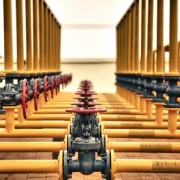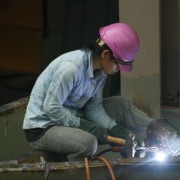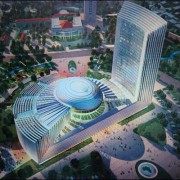Archive | Regional cooperation and integration RSS feed for this section
Regional cooperation and integration
 Regional cooperation and integration
Regional cooperation and integration
 Regional cooperation and integration
Regional cooperation and integration
Regional cooperation and integration
Regional cooperation and integration

Energy is the key to 21st century Eurasian geopolitics

The pattern of world energy trade has changed significantly in recent decades and this is having profound implications for global geopolitics. Several Asian economies, particularly the People’s Republic of China (PRC) and India, have emerged as the region’s most conspicuous energy consumers because of their phenomenal economic growth. On the supply side, the world’s largest energy producers are located in the geographically proximate regions of Central Asia, the Middle East, and Russia. A complementary relationship between these energy exporters and suppliers is evident and is being strengthened, connecting together Central and East Asia, parts of India, the Persian Gulf, and Russia. I call this the “new continentalism.”
It is time for binding agreements on migrants’ rights in Asia

Migration flows within Asia are of considerable size. According to the ILO (2006), between 1995 and 2000, 40% of the 2.6 million to 2.9 million Asian migrant workers (registered and undocumented) went to other countries in Asia, including the countries of the Gulf Cooperation Council (GCC) where Asian migrant workers made up 40% to 70% of the labor force in 2000. Unfortunately more recent data are not available, but the significance of intra-Asian migration constitutes a continuing trend. This post follows the definition of “Asia” used by the United Nations, which includes countries in the Middle East. The migration system in Asia is primarily based on temporary migration largely of low-skilled and semi-skilled workers, facilitated by private recruitment agencies (Wickramasekara 2006)
Does the Eurasian Union have a future?
On 3 October 2011, Russian Prime Minister Vladimir Putin proposed the establishment of a Eurasian Union in an article published in the Russian broadsheet Izvestia. The article was entitled “New integration project for Eurasia – making the future today.”
Chinese and US health programs in Africa have more in common than you might think

Concerns have been expressed in the Western media that Chinese aid to Africa represents a form of “new colonialism.” However, comparing Chinese and US health programs in Africa suggests that the two have more in common than might be expected. Both countries’ health efforts in the region share similarities in terms of objectives, priorities and challenges. Foreign aid from the PRC and the US is provided not only as development assistance but also as a tool of soft power. Both the PRC and the US shape some of their health efforts to boost friendship and goodwill across Africa. Public opinion polls suggest that both countries are generally viewed positively by Africans.


Search
Subscribe / Connect to Asia Pathways
Subjects
- Accelerating Progress in Gender Equality
- Addressing Remaining Poverty and Reducing Inequality
- Agriculture and natural resources
- Capacity development
- Climate change
- Economics
- Education
- Energy
- Environment
- Finance and Innovation
- Finance sector development
- Gender
- Globalization and Economic Stability
- Globalization, Environment, and Climate Change
- Governance and public sector management
- Health
- Human Capital Development for Inclusive Growth and Shared Prosperity
- Industry and trade
- Information and Communications Technology
- Infrastructure
- Making Cities More Livable
- Miscellaneous
- Population
- Poverty
- Private sector development
- Promoting Rural Development and Food Security
- Regional cooperation and integration
- Sanitation
- Social development and protection
- Strengthening Governance and Institutional Capacity
- Subjects
- Tackling Climate Change, Building Climate and Disaster Resilience, and Enhancing Environmental Sustainability
- Transport
- Uncategorized
- Urban development
- Video Blog
- Water
Recent Posts
- Scaling Up Dietary Diversity for Health, the Environment, and Food Security in Asia
- Preparing for LDC Graduation: Sustaining Development and Integration amid Changing Trade Schemes
- Facing the Heat: Addressing the Health Impacts of Extreme Temperatures
- Harnessing Energy Transition to Power Rural Development and Female Empowerment
- The Promise and Perils of Mother Tongue-Based Education




Recent Comments